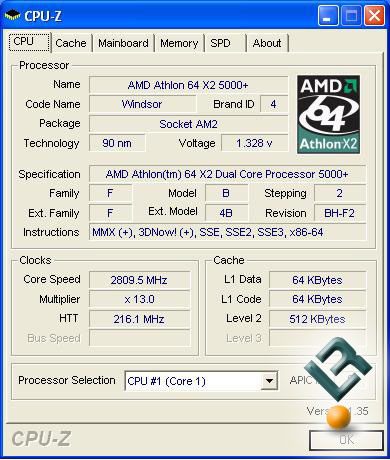Asrock AM2V890-VSTA & MSI K9A Platinum Motherboards
The Tests: Overclocking
Since these two boards are actually at two different price points, it would only make sense that one of the major things that would separate them would be the area of overclocking. And this does hold true between these two boards. As we saw in our benchmarks, the Asrock board was very fast at stock settings, but here in the overclocking realm, it could not hold its ground. Reaching a max overclock on default vcore of an HTT of 216, which equaled a processor speed of 2.8Ghz, a 200 Mhz increase over its default settings. Remember, the Asrock vcore Only went up to 1.35, so even when we set the vcore to 1.35v, we were unable to go any further in our overclocking efforts. Lowering the multiplier did not let us fair any better as far as raw CPU speed is considered. The “AWE” level for motherboards today is to reach that setting of 300HTT, and this board was not anywhere capable of doing that. Here is a screen shot of the overclocking adventures on this budget board:

As expected, the MSI board did fair better than the Asrock in this area of overclocking, and was actually able to overclock better than Asrock on less voltage as reported by CPU-Z. We did have the ability to adjust the vcore more on the MSI, and in doing so, we were able to squeeze another 100Mhz out of the CPU, running at a speed of 3.15Ghz. Lowering the multiplier allowed us to be able to push the board over that 300HTT mark, in fact, we were able to push the board to right at 315HTT before it showed signs of struggle. Let’s take a look at our stock overclocking results from teh MSI K9A Platinum:

Obviousley, these two boards are in two different markets, but let’s leave that for the conclusion!

Comments are closed.